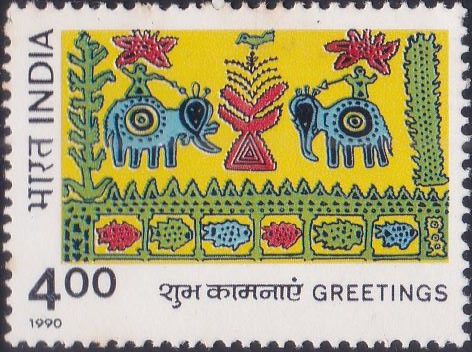
India Greetings 1990
Complete Set of 2 nos of postage stamps on the Greetings :
Issued by India
Issued on Dec 17, 1990
Issued for : To strengthen the spirit of such greetings and make the medium of transmission more communicative, the Department of Posts is bringing out a set of two stamps on the theme of greetings.
Description of Designs : The 400 p multicolour stamp has been designed by India Security Press, Nashik Road. The 100 p multicolour stamp and FDC are based on designs by Sh. R.N. Pasricha. Cancellation is designed by Mrs. Alka Sharma.
Type : Stamps, Mint Condition
Colour : Multicolour
Denomination : 100, 400 Paise
Overall size : 3.91 x 2.90 cms., 3.91 x 2.90 cms.
Printing size : 3.55 x 2.54 cms., 3.55 x 2.55 cms.
Perforation : 13 x 13
Paper : Imported U/M Gravure Coated and Gummed Stamp Paper
Number Printed : 1.00 Million each
Number per issue sheet : 35
Printing Process : Photogravure Process
Printed : India Security Press
About :
- The exchange of greetings between two friends is very common. The most popular medium of exchange of greetings these days is a greeting card usually sent by post. It is an illustrated message that express, seriously or humorously, friendship, love, affection, goodwill, gratitude, sympathy or some other sentiments. Greeting cards are also sent on occasions of birth days, anniversaries and on religious, cultural and social occasions. In addition to get-well and bon-voyage messages, cards are also sent as congratulations and for conveying thanks.
- The exchange of illustrated greetings between friends has been recorded from ancient times. The celebration of New Year in Egypt was usually marked by exchange of such symbolic presents as scent bottles and scarabs inscribed “au ab nab“ (all good luck). In Rome, the medium of expression of greetings was exchange of strenae, normally branches of Laurel or Olive, coated with gold leaf. Seasonal greetings were symbolised by exchanging Roman Lamps impressed with the figures of victory surrounded by strenae inscribed “Anno novo faustum felix tibi sit“ (May the new year be happy and lucky for you). The practice of sending of acknowledgement for the new year with the exchange of goodwill continued in Europe through the early days of Christianity. With the advent of printing press and its commercial use by the 18th and 19th centuries, the exchange of new year cards/calendars/greetings by merchants and tradesmen became common place. The introduction of penny postage and envelops in 1840 provided a convenient transmission media and the exchange of greeting card became a normal and routine feature. The modern day greeting card crystalised in 1843 when the first X-mas card with season’s greetings was designed in U.K. The commercial production of greeting cards became fully established by 1860’s.
- Though there are several means of conveying greetings, the post remains the most popular and predominant mode of transmission. In India, too, the practice of sending greetings by way of illustrated messages by post was perhaps started by the British. It has become now an established feature as in most other countries. We send greetings on occasions like Deepawali, Pongal, Durga Puja, Baisakhi, Bihu, Christmas, Id and other regional festivals.


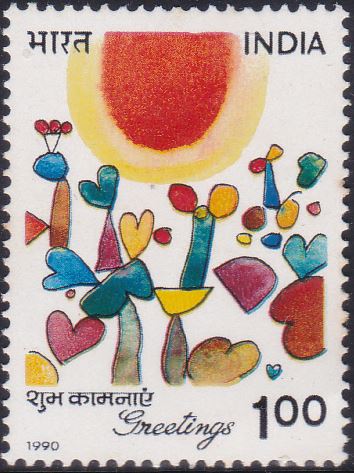


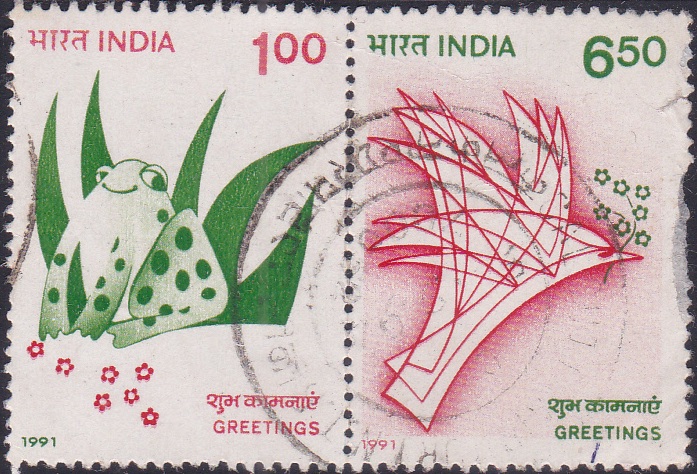
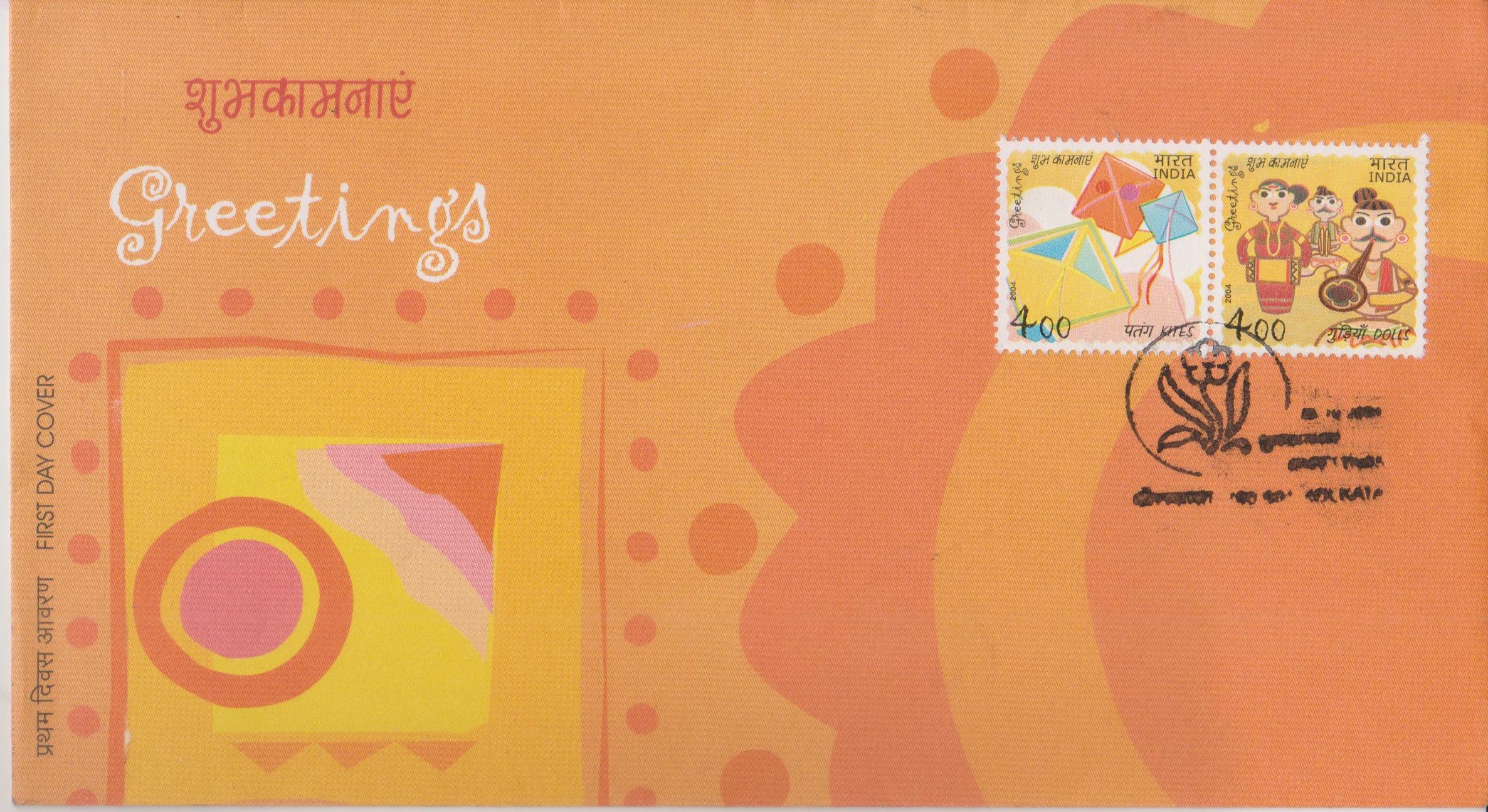
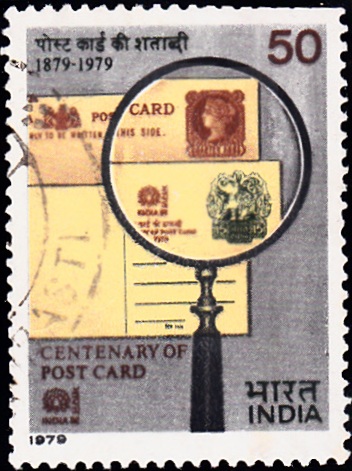
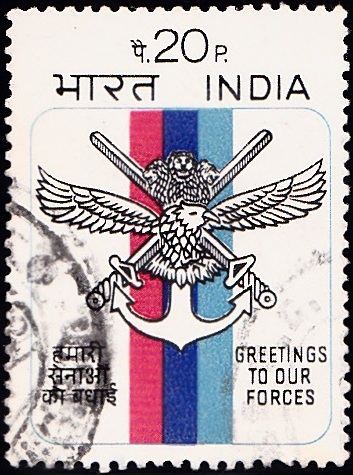
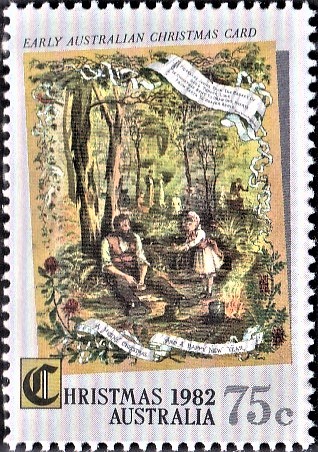
[…] greetings stamps, first introduced in India in 1990, are designed to complement the card or letter inside the envelope. Although the designs are not […]